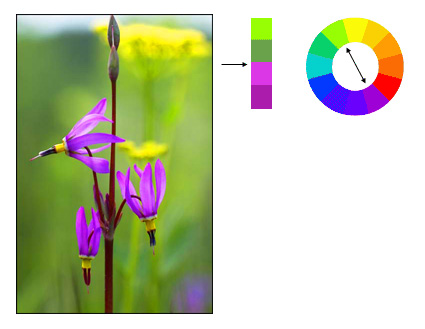

Complementary Colors
Complementary colors are located directly across from each other on the color
wheel.
Complementary pairs contrast because they share no common colors.
Complementary colors can appear very exciting and seem to vibrate when placed side by side.
By placing brilliant orange flowers against a bright blue background, Vincent van Gogh's painting buzzes with visual energy.
This scheme looks best when you put a warm color against a cool color, for example, red versus green-blue. The complementary scheme is intrinsically high-contrast.
Van Gogh to his brother Theo:
"I have tried to express the terrible passions of humanity by means of red and green. The room is blood red and dark yellow with a green billiard table in the middle; there are four citron yellow lamps with a glow of orange and green. Everywhere there is a clash and contrast of the most disparate reds and greens....’
When using the complementary scheme, it is important to choose a dominant color and use its complementary color for accents. Using one color for the background and its complementary color to highlight important elements, you will get color dominance combined with sharp color contrast.

Pros: The complementary color scheme offers stronger contrast than any other color scheme, and draws maximum attention.

Tips:
1. For best results, place cool colors against warm ones, for example, blue versus orange.
2. If you use a warm color (red or yellow) as an accent, you can desaturate the opposite cool colors to put more emphasis on the warm colors.
3. Avoid using desaturated warm colors (e.g. browns or dull yellows).
4. Try the split complementary scheme; it is similar to the complementary scheme but offers more variety.
